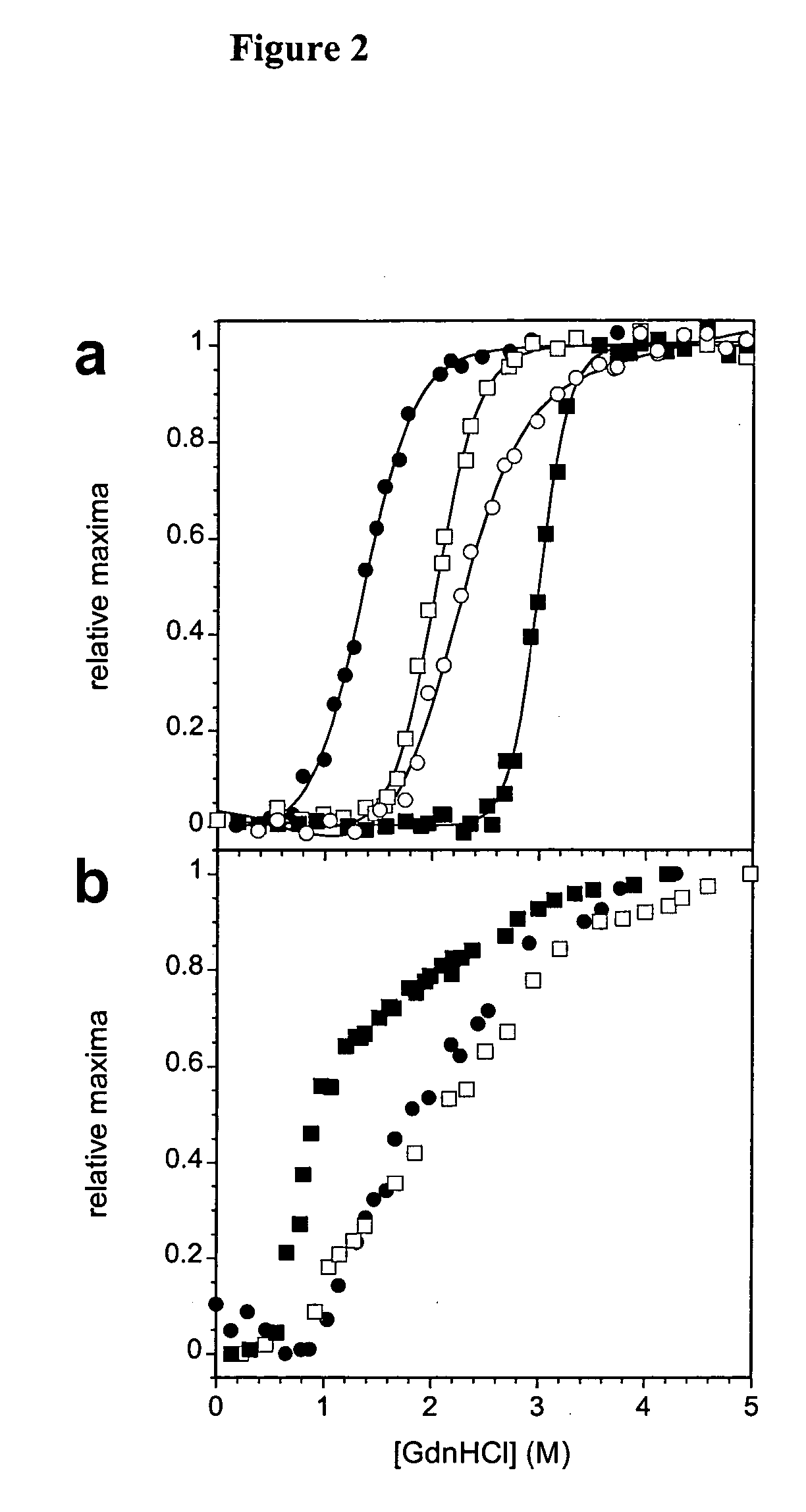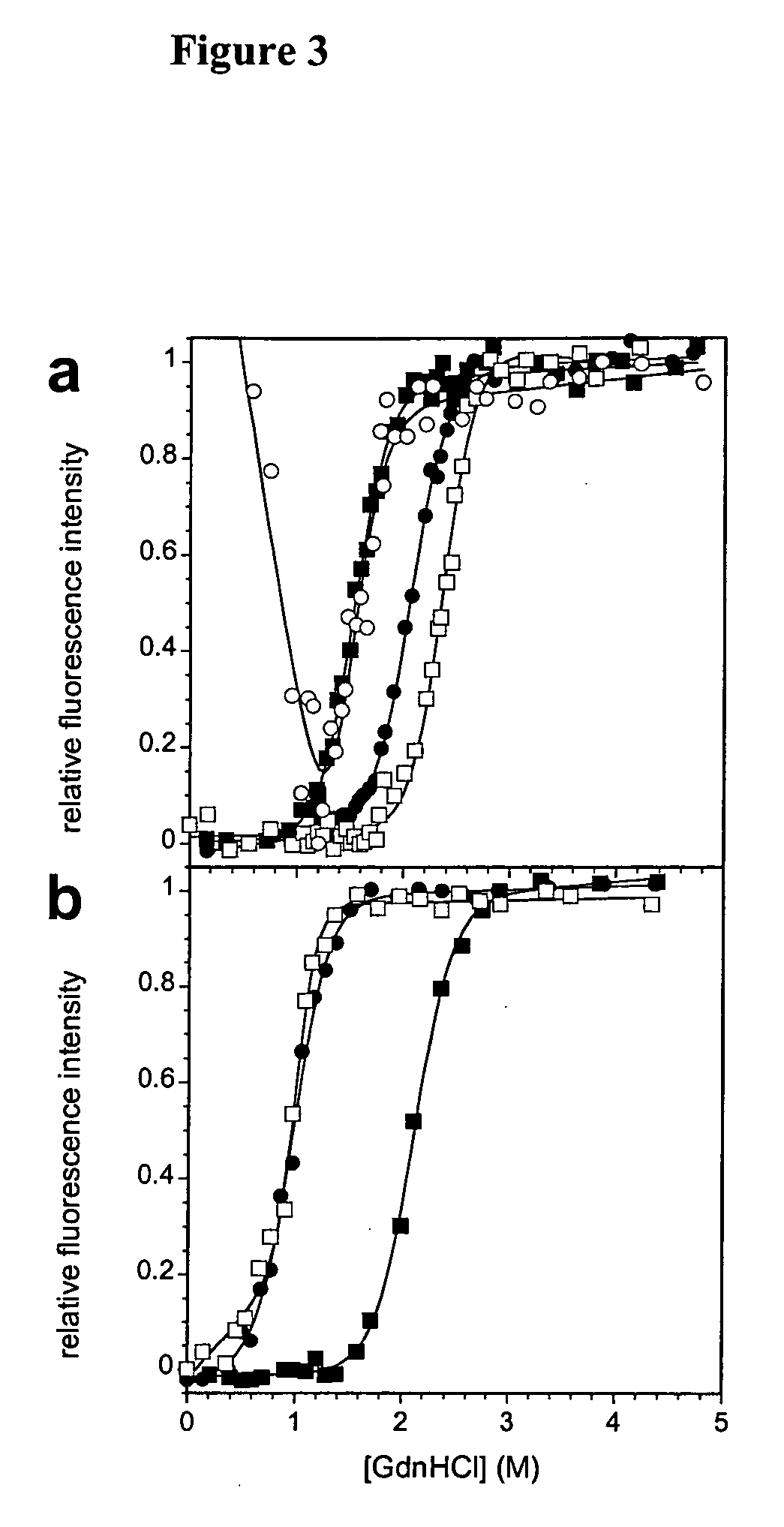Modification of human variable domains
a human variable and domain technology, applied in the field of human variable domain modification, can solve the problems of large size of whole antibody a potential liability in some treatment regimens, severe challenges to the stability of these molecules, and insufficient homology of antibody molecules, etc., and achieve the effect of high degree of homology
- Summary
- Abstract
- Description
- Claims
- Application Information
AI Technical Summary
Benefits of technology
Problems solved by technology
Method used
Image
Examples
example 1
Construction of Expression Vectors
[0100] Starting point for all expression vectors were the scFv master genes of the HuCAL library in the orientation VH-(Gly4Ser)4-VL in the expression vector pBS13 (Knappik et al., 2000), which all carried H-CDR3 and L-CDR3 of the antibody hu4D5-8 (Carter et al., 1992).
[0101] The seven isolated human consensus VH domains were PCR amplified from the master genes and the CDR3 region between the BssHII and StyI restriction sites was then exchanged to code for a CDR-H3 found by metabolic selection (J. Burmester et al., unpublished results): YNHEADMLIRNWLYSDV. The final expression plasmids were derivatives of the vector pAK400 (Krebber et al., 1997), in which the expression cassette of the seven different VH domains had been introduced between the XbaI and HindIII restriction sites, and where the skp cassette (Bothmann & Plückthun, 1998) had been introduced at the NotI restriction site. The expression cassette consists of a phoA signal sequence, the s...
example 2
References for Example 2
[0195] 1. Bird, R. E., Hardman, K. D., Jacobson, J. W., Johnson, S., Kaufman, B. M., Lee, S. M., Lee, T., Pope, S. H., Riordan, G. S., and Whitlow, M. (1988) Single-chain antigen-binding proteins, Science 242, 423-426. [0196] 2. Glockshuber, R., Malia, M., Pfitzinger, I., and Plückthun, A. (1990) A comparison of strategies to stabilize immunoglobulin Fv-fragments, Biochemistry 29, 1362-1367. [0197] 3. Huston, J. S., Levinson, D., Mudgett-Hunter, M., Tai, M. S., Novotny, J., Margolies, M. N., Ridge, R. J., Bruccoleri, R. E., Haber, E., Crea, R., and et al. (1988) Protein engineering of antibody binding sites: recovery of specific activity in an anti-digoxin single-chain Fv analogue produced in Escherichia coli, Proc. Natl. Acad. Sci. USA 85, 5879-5883. [0198] 4. Plückthun, A., Krebber, A., Horn, U., Knüpfer, U., Wenderoth, R., Nieba, L., Proba, K., and Riesenberg, D (1996) in Antibody Engineering, A Practical Approach (Mc Cafferty, J., Hoogenboom, H. R., and C...
PUM
| Property | Measurement | Unit |
|---|---|---|
| Tm | aaaaa | aaaaa |
| Tm | aaaaa | aaaaa |
| Tm | aaaaa | aaaaa |
Abstract
Description
Claims
Application Information
 Login to View More
Login to View More - R&D
- Intellectual Property
- Life Sciences
- Materials
- Tech Scout
- Unparalleled Data Quality
- Higher Quality Content
- 60% Fewer Hallucinations
Browse by: Latest US Patents, China's latest patents, Technical Efficacy Thesaurus, Application Domain, Technology Topic, Popular Technical Reports.
© 2025 PatSnap. All rights reserved.Legal|Privacy policy|Modern Slavery Act Transparency Statement|Sitemap|About US| Contact US: help@patsnap.com



